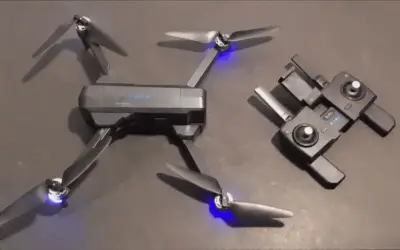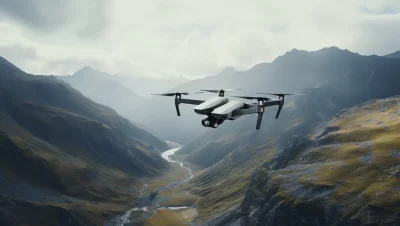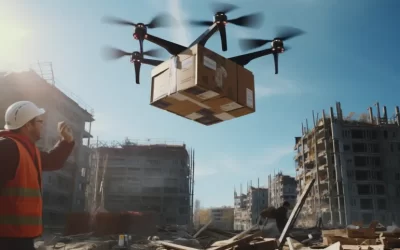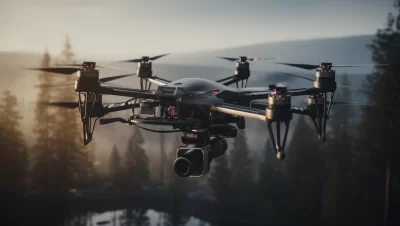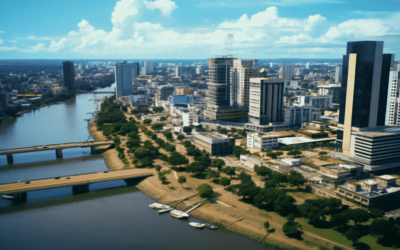Hey there, fellow drone enthusiasts and inquisitive readers! If you’ve ever found yourself gazing up at the sky, wondering about the ins and outs of Canada’s drone laws, you’re not alone. I’ve been there, too, filled with curiosity and a thirst for knowledge.
It’s a common search, and I totally get it. Drones are fascinating pieces of technology, and it’s only natural to want to explore the regulations surrounding them.
Well, let me tell you. I’ve been on quite the research journey to uncover all the nitty-gritty details about Canada’s drone laws.
I dove into the depths of official documents, scrutinized Transport Canada’s guidelines, and connected with fellow enthusiasts who have first-hand experience navigating these rules. I wanted to make sure I had the most up-to-date, accurate, and relevant information to share with you.
So, if you’re seeking answers, solutions, or just a good old dose of knowledge about Canada’s drone laws, you’ve come to the right place.
In the upcoming article, I’ll break down the rules and regulations, share insights from my research, and provide you with a clear understanding of how to operate your drone responsibly in the Great White North. Whether you’re a hobbyist, a professional, or simply curious, read on, and let’s demystify Canada’s drone laws together.
- Canada General Regulations for Drone Operation
- Categories of Drone Operations in Canada
- Canada Rules for Advanced Drone Operations
- Flying a Drone Outside Basic or Advanced Operations
- General Considerations
- Canada Penalties and Consequences
- Canada Future Regulatory Landscape
- Final Thoughts on Canada Drone Laws
Canada General Regulations for Drone Operation

Canada’s drone laws, like those of many other countries, aim to strike a balance between enabling the benefits of drone technology and ensuring public safety.
If you’re venturing into the world of drone piloting, it’s vital to understand these regulations. Here’s a breakdown of the general rules and why they matter:
Discussing Transport Canada’s Authority
When it comes to drone regulations, Transport Canada Civil Aviation (TCCA) is the undisputed captain of the ship.
They are the governing body responsible for overseeing drone operations in the Great White North. Think of them as the air traffic controllers for drones. Their authority extends across the country, ensuring that the skies are shared safely among aircraft and drones alike.
The Need for Pilot Certificates and Registration
To fly a drone within Canada’s borders, there are certain hoops to jump through. Every drone operator must obtain a pilot certificate, akin to how drivers need a license to operate a car.
This certificate is a way of ensuring that drone pilots have the knowledge and skills to navigate the skies safely. It’s like passing your driving test but for the skies.
But that’s not all.
Drones weighing between 250 grams and 25 kilograms must also be registered with Transport Canada. It’s akin to ensuring your vehicle is roadworthy. Just like your car has a license plate, your drone needs a registration number to identify it in case it takes an unplanned detour.
Specific Rules
Now, let’s talk specifics. Canada’s drone laws set out some clear boundaries to keep the skies safe.
Drones weighing below 250 grams are a bit like lightweight bicycles; they have a bit more freedom and don’t need to be registered. But once a drone tips the scales at 250 grams or more, it’s time to get serious. It’s not just about size; it’s about safety.
Also Read: Drone Regulation in Cameroon 2024
Categories of Drone Operations in Canada

As we delve deeper into the world of Canada’s drone laws, you’ll quickly realize that they’re not a one-size-fits-all deal.
Drone operations are categorized into two distinct groups: basic and advanced. Understanding the differences and the criteria that classify them is essential for smooth and safe flying.
Basic or Advanced
So, what’s the deal with these categories, you might ask? Well, it all boils down to the nature of your drone operation.
Think of it like how you classify different types of cars. Some are meant for leisurely drives, while others are built for high-speed races. Similarly, some drone operations are basic, and others fall into the advanced category.
The Criteria for Categorization
But how do you know which category your drone operation falls into? It’s not as complicated as it may seem.
For basic operations, you need to meet three specific conditions. First, your drone must be flown in uncontrolled airspace, somewhat akin to driving in a quiet suburban neighborhood. Second, it should remain more than 30 meters horizontally from bystanders, ensuring everyone’s safety. And third, it should never directly hover above bystanders.
If you don’t meet all of these conditions, your operation is classified as advanced. It’s like leveling up in a video game; you’re ready to tackle more complex challenges.
Safety and Regulations
Now, why does all this categorization business even matter? It all comes down to safety and regulations. Just as there are different rules for cars and motorcycles, the same applies to drones.
Basic operations are generally considered lower-risk, but advanced operations may involve more complexity, like flying in controlled airspace or over people. These rules help ensure that pilots have the right skills and knowledge to handle more challenging scenarios.
By understanding these categories, you can navigate the skies responsibly and make sure you’re operating within the right set of rules.
It’s like knowing the speed limits on different roads and adjusting your driving style accordingly. Whether you’re a drone hobbyist or a professional pilot, knowing where you fit in these categories is key to safe and enjoyable flights.
Altitude matters, too. Just as there are speed limits on the roads, there are altitude limits in the sky. Drones must stay below 400 feet in the air. It’s a bit like how you wouldn’t take your car drag racing down a residential street; it’s just not safe.
Safety first, always. Drones must be flown away from emergency sites or special events, just like you’d steer clear of a construction zone or a parade.
And bystanders deserve some space. For basic operations, a minimum distance of 30 meters horizontally is a must. It’s akin to keeping a safe distance between cars on the highway.
Complying with Legal Requirements
To sum it up, while flying your drone, it’s not only about taking to the skies and having fun – you’ve got to play by the rules. Legal requirements are like the white lines on the road; they keep everyone safe.
You’ll need to be informed, follow safety guidelines, and respect the legal framework governing drone operations in Canada. It’s not just about having a good time; it’s about doing it responsibly.
Also Read: Drone Regulation in Cambodia 2024
Canada Rules for Advanced Drone Operations

Now, let’s take it up a notch and explore the world of advanced drone operations. This is where the skies open up to more complex flights, but with complexity comes added responsibility.
Advanced Operations
If you’re itching to engage in advanced drone operations, there are a few more items on your checklist. First and foremost, you’ll need a Pilot Certificate – Advanced Operations. It’s like upgrading from a regular driver’s license to a commercial one – it signifies that you’ve got the skills and knowledge to tackle more challenging flights.
The In-Person Flight Review
One of the steps to obtaining this advanced certificate involves an in-person flight review. Think of it as your driving test on the road, but this time, it’s in the air.
This review assesses your ability to handle your drone safely, ensuring that you’re prepared for the complexities of advanced operations. It’s all about making sure you’re ready for the skies.
Safety Standards and Area Surveys
Safety remains a top priority in advanced operations. To take to the skies in this category, your drone must meet RPAS Safety Assurance standards. It’s like ensuring your vehicle is equipped with the latest safety features and technology to keep you safe on the road.
But it doesn’t stop there. Just as a pilot checks their aircraft before a flight, you’ll need to survey the area where you intend to fly your drone. This involves scouting for any obstacles, like buildings or power lines, that could pose a risk during your flight. It’s akin to checking the road conditions and potential hazards before embarking on a long road trip.
In a nutshell, advanced operations require more preparation and adherence to stringent safety standards. It’s like shifting from local roads to the highway—more speed and complexity, but also more rules and responsibilities.
Also Read: Drone Regulation in Cape Verde 2024
Flying a Drone Outside Basic or Advanced Operations

Okay, folks, sometimes you might want to take your drone adventures to the next level, beyond the basic and advanced operations. It’s like wanting to explore uncharted roads. But to do that, you need to follow some specific procedures and ensure you’re operating safely and responsibly.
The Special Flight Operations Certificate (SFOC)
When your drone operation goes beyond the realms of basic and advanced, it’s time to get acquainted with the Special Flight Operations Certificate (SFOC). Think of it as your passport to the uncharted territories of drone flights.
To obtain this certificate, you’ll need to apply to the Minister of Transport, explaining the purpose of your operation and detailing how you’ll ensure safety. It’s like requesting permission to take a detour from the usual road, and ensuring you have the right vehicle and plan for the journey.
Permission with Purpose
Once you’ve been granted an SFOC, it’s crucial to stick to the plan. The certificate is not a free pass for unlimited drone exploration. It’s more like receiving a permit to carry hazardous materials – it comes with strict conditions to ensure safety.
Your drone operations must be limited only to the specific purpose for which the certificate was intended. Just as you wouldn’t use the hazardous materials permit to transport everyday goods, you can’t misuse the SFOC for unrelated drone activities.
In a nutshell, venturing outside the basic and advanced categories is possible, but it comes with rules and responsibilities. Think of it as taking the scenic route on your road trip – it’s a unique journey, but it requires careful planning, adhering to regulations, and a keen sense of purpose.
Also Read: Drone Regulation in Burundi 2024
General Considerations

Now, let’s talk about the fine print of drone operations. It’s like understanding the terms and conditions of a contract before you sign on the dotted line. When you’re considering commercial drone applications, there are several regulatory requirements you need to be aware of.
Navigating Commercial Waters
If you’re planning to use drones for commercial purposes, you’re entering a slightly more complex terrain. It’s similar to turning your hobby car into a delivery vehicle.
You’ll need to maintain up-to-date records of your operations, just as a commercial fleet keeps meticulous logs. There are also payload restrictions to consider, ensuring you’re not overloading your drone. This is akin to ensuring your delivery vehicle doesn’t carry more than its capacity.
Respecting Privacy and the Law
As drone operators, we’re not just responsible for our machines; we’re also stewards of privacy. Drones can capture information and images that may infringe on someone’s personal space, much like peering into your neighbor’s backyard.
It’s essential to comply with local by-laws and privacy regulations, ensuring you don’t inadvertently trespass on someone’s privacy. Think of it as being mindful of your surroundings, much like you’d respect the privacy of others in a public space.
In summary, commercial drone applications come with a set of rules and responsibilities. But by keeping records, respecting payload limits, and adhering to privacy regulations, you can navigate this world smoothly and make the most of your drone’s capabilities.
Also Read: Drone Regulation in Burkina Faso 2024
Canada Penalties and Consequences

Let’s face it: rules and regulations are in place for a reason. They’re like the guardrails on a winding road, keeping us safe.
But what happens if you decide to break those rules in the world of drone operations? Well, there are penalties and consequences to deal with.
Flying in Violation of Regulations
One of the quickest ways to get into trouble is by flying your drone without the necessary certification.
It’s like hitting the road without a driver’s license. In Canada, this can lead to fines of up to $5,000, which is no small change. So, it’s crucial to ensure you have the right paperwork before taking off.
Putting Others at Risk
Now, let’s talk about serious business. If your drone operation endangers other aircraft or people, the consequences become even more severe.
It’s like reckless driving but in the air. Fines for actions that place others at risk can reach up to $15,000. That’s a hefty price to pay for disregarding safety. Just as a reckless driver can cause accidents, a rogue drone operator can lead to catastrophic incidents.
In essence, it’s vital to understand that violating drone regulations isn’t just a matter of breaking some rules – it can have serious consequences, both in terms of fines and the potential risks to people and other aircraft. So, always ensure you’re in compliance and fly responsibly.
Also Read: Drone Regulation in Bulgaria 2024
Canada Future Regulatory Landscape

The world of drone regulations is ever-evolving, much like the constant upgrades in the tech world.
Transport Canada recognizes the need for regulatory changes to foster economic growth and innovation in the drone industry. It’s like updating an old piece of software to unlock new features and capabilities.
Proposed Amendments on the Horizon
So, what’s on the horizon for drone laws in Canada? Well, Transport Canada is proposing some amendments to the existing regulations.
These changes are aimed at expanding the possibilities for drone operators. Imagine getting a software update that opens up new functions on your smartphone – it’s quite similar.
These amendments include adjustments to visual line of sight (VLOS) and beyond visual line of sight (BVLOS) regulations.
This means drones could potentially fly farther and in more complex scenarios. It’s like extending the range of your Wi-Fi network, allowing you to access the internet from more places.
Technical and Maintenance Requirements
In the future, certain drone operations may require drones to be equipped with technology that allows them to detect and avoid other aircraft. This is like having a built-in radar system for your car to prevent collisions.
Organizations may also need to appoint specific personnel and implement strict maintenance procedures, similar to following your car manufacturer’s maintenance manual to keep it in top shape.
Additionally, there’s the possibility of drones being equipped with remote identification features. This is like having a license plate on your drone – it helps in tracking, detecting, and identifying the drone during flights. It’s all about accountability and safety in the skies.
The Expected Timeline and Impact
Transport Canada is planning to release these amendments for public review in the Canada Gazette in the near future.
Once approved, these changes could simplify complex drone operations, encourage more investment in the industry, and open up new possibilities for commercial drone use. It’s like awaiting the next big software update that promises to make your device even better.
In conclusion, the future of drone regulations in Canada is a promising one. As technology advances and the demand for more complex drone operations grows, these amendments will shape the Canadian drone landscape, allowing operators to explore new horizons safely and responsibly.
Also Read: Drone Regulation in Brunei 2024
Final Thoughts on Canada Drone Laws

As we wrap up this journey through Canada’s drone laws and regulations, let’s take a moment to recap the essentials. It’s like reaching the final chapter of a book – the conclusion ties everything together.
We’ve delved into the existing regulations, discovering that Canada has some of the strictest drone laws in the world. From registration and certification to respecting privacy and avoiding risks, these rules are here for a reason.
We’ve also explored the exciting future possibilities as Transport Canada plans to amend the regulations, potentially allowing for more advanced drone operations. It’s like understanding the current state of affairs and getting a glimpse of what’s on the horizon.
So, what’s the key takeaway from all this? Well, if you’re a drone operator or aspiring to be one, the path ahead is clear. Stay informed.
Keep an eye on evolving regulations, much like you’d track the updates on your favorite social media platform. Prioritize safety, responsibility, and compliance with the law. Think of it as following the traffic rules on your journey – it keeps everyone safe and ensures a smooth ride.
Remember, the drone community in Canada is on the cusp of exciting changes. Embrace them, adapt to new regulations, and continue to explore the skies responsibly.
The future of drone operations is as vast as the open sky, and it’s up to all of us to make it a safer and more exciting place to be.
Also Read: Drone Regulation in Brazil 2024


